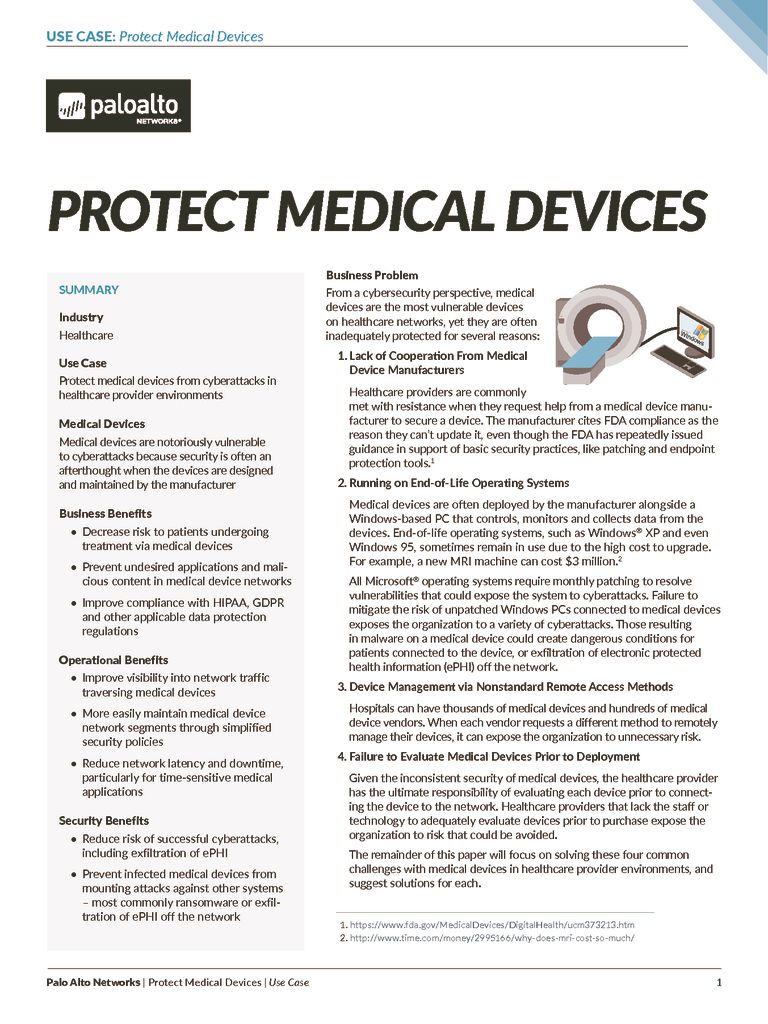Medical devices are notoriously vulnerable to cyberattacks because security is often an afterthought when the devices are designed and maintained by the manufacturer. Considering the lack of guidance around medical device security, healthcare providers have done what they could to secure the systems. Typical approaches usually involve legacy security technologies that neither adequately protect the devices nor scale in a way that can be managed by the network and security teams.
- Business Benefits
- i. Decrease risk to patients undergoing treatment via medical devices.
- ii. Prevent undesired applications and malicious content in medical device networks.
- iii. Improve compliance with HIPAA, GDPR and other applicable data protection regulations.
- Operational Benefits
- i. Improve visibility into network traffic traversing medical devices.
- ii. More easily maintain medical device network segments through simplified security policies.
- iii. Reduce network latency and downtime, particularly for time-sensitive medical applications.
- Security Benefits
- i. Reduce risk of successful cyberattacks, including exfiltration of ePH.
- ii. Prevent infected medical devices from mounting attacks against other systems – most commonly ransomware or exfiltration of ePHI off the network.
Read this whitepaper to understand how Palo Alto Networks security platform provides best-in-class security for medical devices in a healthcare environment. It outlines several architectural options along with pros and cons to help find the right balance of security, management effort and ROI.
